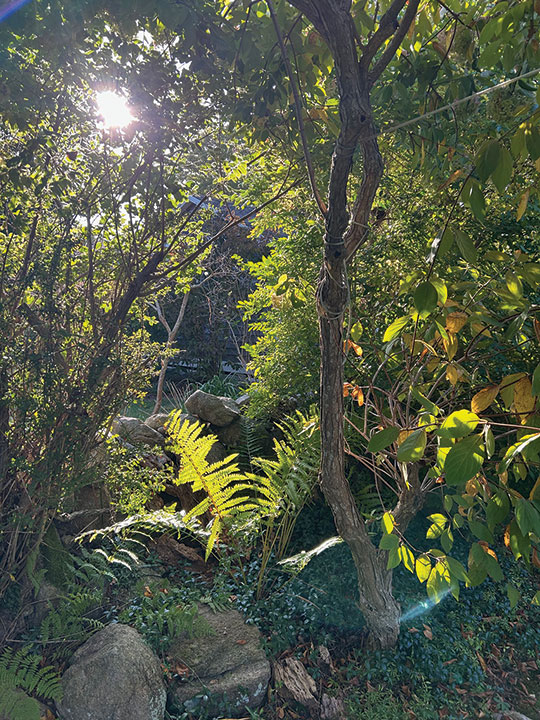Autumn is here, like an old friend arriving with ease and familiar comfort. Welcome back! Your return gives us much to be thankful for. Empty beaches to roam, comfortable weather and some of the most dazzling colors in nature.
We know the signals – the orange, red, and yellow foliage that begins to blanket the landscape, the maples ablaze with color, and pumpkins appearing at farm stands.
What comes to mind when you think about fall? I asked Suzanne – we’ve tallied many falls together since meeting in 5th grade – coincidentally she visited yesterday when I was thinking of this column. Her response: “Crisp mornings, sunny blue afternoons, fall festivals and hayrides and corn mazes, coastal bike rides, vineyard tours, apple picking, chili cookoffs, apple cider, and pumpkin latte.”
We heartily agree – the sights, the smell and the taste of fall and the colors of the trees seen on the commute to work – all of fall’s present and past converge. When you grow up in New England it’s a much-cherished time. For many of us, it’s the sensory overload that is so captivating. Not all of it is about pumpkin-flavoring, but more the natural scents that fall brings – the decaying leaves, wood fires, crisp morning air, the orchard’s fallen apples fermenting. This morning’s mist, mingling with the crunch of fallen leaves, deepens the simple pleasures of the season. The quiet hush of birdsong has given way to the steady chorus of crickets.
Gardening season is winding down, but there is still plenty to do and it’s much more comfortable now with temperatures hovering in the 70s. Now is the time to assess and to (in following the lead of our local squirrels) get everything inside that isn’t hardy. Any avid gardener knows that fall is time to take inventory of plants and also to make plans for alterations and expansions of borders.
While clearing the withered remains of plants in a woodland garden yesterday, I instinctively considered ways to improve it. The understory of this garden is home to epimediums, bluebells, lily of the valley and other spring blooming wildflowers and ferns. I think it might be nice to add a companion to the fall-blooming Kirengeshoma palmata (yellow wax bells) to add more interest. I tackle the uninvited vines that have woven their way into the rhododendrons and mountain laurel. It becomes more than a few hours of work.
Sometimes I think fall comes too quickly as there are things I forgot to do or didn’t quite get to yet. Like gathering seaweed to overdress the winter garden. Some gardeners go further – drying the seaweed, then combining it with fallen leaves and chopping them up (with the mower) and spreading it over the beds like a winter blanket. In spring it can be incorporated into the soil to add tilth.
Fall is also the time to collect seeds of flowers and add them to the already numerous piles of labeled paper lunch bags. That reminds me I have to purge the shed again and replace a broken windowpane. I need two label seeds that I have saved. Divisions and decisions about how the garden will be shaped or changed next year happen now. Many of these flood my head – one such is creating a dahlia bed – I used to grow them, and I’ve missed these beauties.
Autumn is also a time to take note of stone walls again – plants having receded or in some stage of decay. As I was taking in the laundry from the clothesline the other day, a section of wall caught my eye – a large cinnamon fern splayed out underscored by ivy and above them the shrubbery – now shedding its leaves… all of this backlit by the afternoon sun.
Another great feature of fall is the blue slanted light. It doesn’t seem real. Notice how everything is sharply defined. It has a solitary quality. Fall is sort of like the goodnight kiss at the front door. There’s no follow up.
Well, there is winter. But we’ll leave that alone for now. There are still pleasures to be had. Watching the bees rustle the blossoms overhanging our patio, I try to recall lines from the romantic poets.
“To bend with apples the mossed cottage-trees,
And fill all fruit with ripeness to the core;
To swell the gourd, and plump the hazel shells
With a sweet kernel; to set budding more,
And still more, later flowers for the bees,
Until they think warm days will never cease,
For Summer has o-er-brimmed their clammy cells.”
– from “To Autumn,” by John Keats
The Seaside Gardener
By Laura McLean
